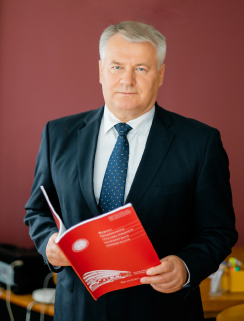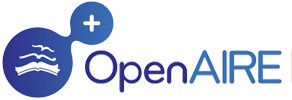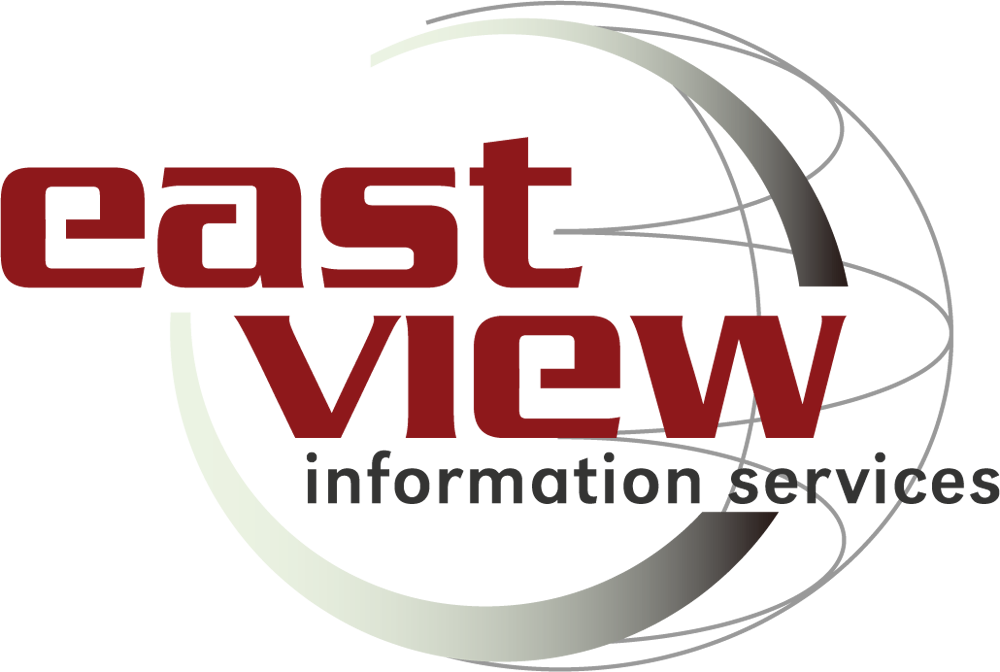Авторам
«Журнал Гродненского государственного медицинского университета» входит в перечень ведущих рецензируемых научных журналов, рекомендованных Высшей аттестационной комиссией (ВАК) Республики Беларусь для опубликования результатов диссертационных исследований. Требования редакции и редколлегии журнала, предъявляемые к материалам, представляемым авторами, соответствуют Рекомендациям, разработанным Международным комитетом редакторов медицинских журналов (ICMJE) по проведению, описанию, редактированию и публикации результатов научной работы в медицинских журналах.
1. Статья должна иметь визу научного руководителя, экспертное заключение о возможности опубликования материалов в печати и направление от учреждения, в котором выполнена работа, с пометкой, является статья плановой, внеплановой или фрагментом диссертации (указать фамилию соискателя) с обязательным расчетом вклада в рукопись каждого из авторов.
2. Статья должна быть напечатана на одной стороне листа формата А4 с 1,5 интервалом между строками. Ширина поля слева – 3 см, сверху и снизу – 2,5 см, справа – 1 см. Текстовый редактор – Microsoft Word 97 и выше. Шрифт – Times New Roman, 14.
3. Электронный вариант статьи и копии сопроводительных документов направляются по адресу электронной почты editor.journal@grsmu.by с пометкой «Статья в Журнал ГрГМУ» и указанием фамилии первого автора в названии файла, или через опцию «Отправить материал» на сайте журнала. Статья, распечатанная в 2-х экземплярах, с подписями всех авторов на последней странице, и оригиналы сопроводительных документов направляются в адрес редакции (230009, Республика Беларусь, г. Гродно, ул. Горького, 80, в редакцию Журнала ГрГМУ) после первичной экспертизы электронного варианта.
4. Объем оригинальных статей, включая рисунки, таблицы, указатель литературы, должен составлять до 10 страниц, научных обзоров и лекций – 12 страниц, остальных публикаций – 9 страниц. Увеличение объема допускается по согласованию с редакцией.
5. Вначале пишутся: индекс УДК, название статьи, инициалы и фамилия авторов, учреждение, которое представило статью, город, страна (все на русском и английском языках).
6. Перед текстом статьи печатается резюме на русском и английском языках, которое в оригинальных исследованиях должно быть структурировано (введение, цель исследования, материал и методы, результаты, выводы, ключевые слова). Ключевые слова должны включать термины из текста статьи, определяющие предметную область в соответствии с рубрикатором Medical Subject Heading MeSH и не повторять название статьи (https://www.nlm.nih.gov/mesh – англоязычный вариант; https://rucml.ru/pages/mesh – вариант на русском языке).
7. Текст оригинальной статьи печатается в следующем порядке: введение, цель исследования, материал и методы (с описанием статистических методов и пакета для обработки результатов), результаты и обсуждение, выводы (заключение), благодарности (раздел не является обязательным), список цитируемой литературы, список литературы в транслитерации.
8. В статьях должна быть использована система единиц СИ. Сокращения слов указываются в скобках при первом упоминании. Общепринятые сокращения химических и математических величин, мер, терминов даются без расшифровки.
9. Иллюстративный материал необходимо присылать в электронном виде отдельными файлами (.tif, .jpg, .cdr), графики в Excel. Все рисунки должны быть пронумерованы в последовательности, соответствующей упоминанию в тексте, и номерами привязаны к подрисуночным подписям. Все подписи к таблицам и иллюстративному материалу должны быть на русском и английском языках.
Пример для подписи таблицы:
Таблица 1. – Основные параметры хроматографического анализа плазмы с добавлением стандартных растворов АСК и СК (С=20 мкг/мл, n=6, р=0,95)
Table 1. – Basic parameters of plasma chromatographic analysis with the addition of ASA and SA standard solutions (С=20 μg/ml, n=6, р=0,95)
Примечание: * − р<0,05
Пример для подписи рисунка:
Рисунок 1. – Нестинпозитивные клетки в составе мелких выводных протоков донорской поджелудочной железы. ×500
Figure 1. – Nestin-positive cells in the part of the small excretory ducts of the
donor pancreas. ×500
10. В таблицах, графиках и диаграммах все цифры и проценты должны быть тщательно выверены автором и соответствовать циф-рам в тексте. В подписях к микрофотографиям указываются увеличение (окуляр, объектив) и метод окраски или импрегнации материала.
11. В экспериментальных работах в разделе «материал и методы» необходимо указание на соответствие принципам экспериментальной и клинической биоэтики.
12. В конце статьи размещается список цитируемой литературы (для оригинальных статей – не более 25 источников, для обзоров – не более 50 источников). Библиографическое описание цитируемых работ производится в соответствии с требованиями ВАК Республики Беларусь.
12.1. Ссылки нумеруются арабскими цифрами в квадратных скобках согласно порядку упоминания в тексте.
12.2. В список цитируемой литературы рекомендуется включать преимущественно работы, опубликованные в течение последних 5-7 лет, за исключением редких и высокоинформативных работ. Не рекомендуется ссылаться на тезисы конференций и съездов, учебники, учебные и методические пособия, справочники, неопубликованные работы, рукописи авторефератов диссертаций или сами диссертации.
13. В соответствии с требованиями международных систем цитирования авторы статей должны представлять библиографические источники цитирования (References) на языке оригинала и в латинице (романском алфавите – транслитерация). Англоязычные источники полностью повторяются (на английском языке) в списке романского алфавита. Список литературы должен соответствовать формату, принятому National Library of Medicine (NLM): http://www.nlm.nih.gov/citingmedicine. Подробная инструкция по составлению References доступна для скачивания по адресу: http://library.grsmu.by/docs/RRes_new.pdf.
13.1. В библиографическом описании каждого источника обязательно должны быть представлены фамилии и инициалы всех (!) авторов.
13.2. При наличии у цитируемого источника DOI (цифрового идентификатора объекта), его в обязательном порядке необходимо указать в конце библиографической ссылки. Наличие DOI статьи можно проверить на сайте http://search.crossref.org/ (ввести в поисковую строку название статьи на английском языке).
13.3. Не допускается сокращение названия статьи и (или) названия русскоязычного журнала. Названия иностранных журналов могут представляться в сокращенном варианте. Сокращенное название англоязычного журнала рекомендуется приводить в соответствии с каталогом названий базы данных MEDLINE (https://www.ncbi.nlm.nih.gov/nlmcatalog/journals). Если журнал не индексируется в MEDLINE, необходимо указывать его полное название.
14. Статья может быть изложена на белорусском, русском, английском языках. Публикуется на языке оригинала.
15. После статьи на русском и английском языках указываются: конфликт интересов авторов; финансирование (при наличии – указать его источник (грант и т.д.)); соответствие принципам этики (одобрение этического комитета (для оригинальных исследований) или информированное согласие пациентов (для статей с описанием клинических случаев); сведения об авторах: ФИО полностью, адрес электронной почты, личный идентификатор ORCID (Open Researcher and Contributor ID) каждого автора. При отсутствии идентификатора ORCID его необходимо получить, зарегистрировавшись на сайте https://orcid.org/. Для оперативной связи с редакцией указывается контактный номер телефона ответственного автора (в журнале не публикуется).
16. Направление в редакцию ранее опубликованных или уже принятых к печати в других изданиях работ не допускается. Не принимаются к печати статьи с нарушением «Правил и норм гуманного обращения с биологическими объектами исследований».
17. Редакция оставляет за собой право сокращать и редактировать статьи.
18. Рассмотрение статей на предмет публикации осуществляется после предоставления копии квитанции о подписке на журнал. Статьи рекламного характера и иные виды рекламной информации публикуются после предварительной оплаты.
19. При нарушении указанных правил статьи не рассматриваются.
20. Направляя статью, авторы подтверждают, что ознакомлены с редакционной политикой, опубликованной на сайте журнала в разделе «О нас».






























